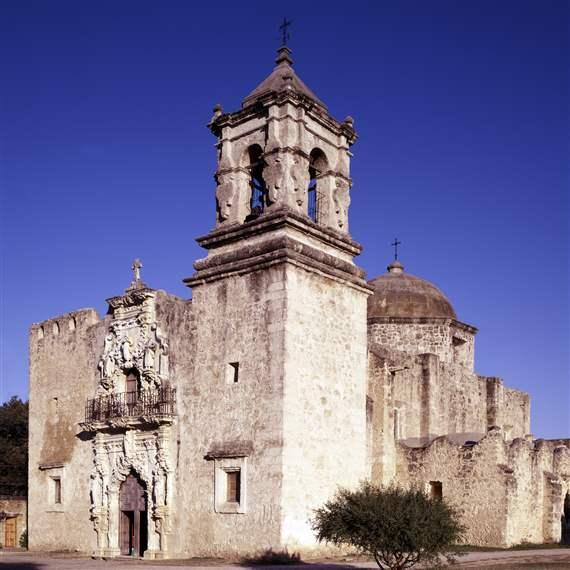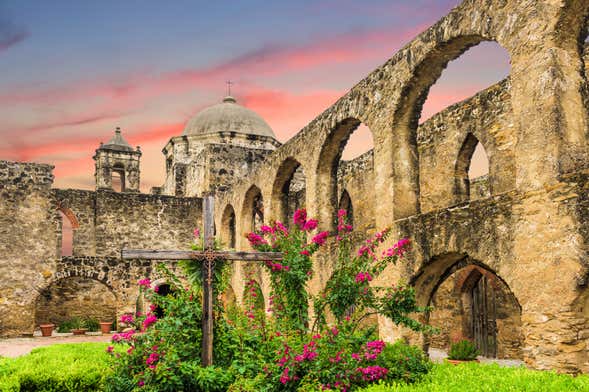Fun San Antonio Missions National Historical Park Activities: Involve with History
Fun San Antonio Missions National Historical Park Activities: Involve with History
Blog Article
Explore the Rich History of San Antonio Missions National Historical Park: a Comprehensive Guide to Its Cultural Importance and Conservation Initiatives
San Antonio Missions National Historical Park stands as a testament to a past period, enveloping an abundant tapestry of history and cultural value. As we start a trip through the historical background of these missions, we uncover building wonders that have stood up to the test of time. Past the plain physical frameworks, each mission, especially Mission Espada, brings a profound cultural weight that reverberates deeply with those that explore its premises. Further diving into the conservation efforts and obstacles encountered by the park reveals an intricate interplay in between area, background, and preservation involvement. The story of San Antonio Missions National Historical Park is not merely about the past; it is a living story that remains to unravel, inviting us to contemplate its enduring legacy and the continuous initiatives to protect its heritage.
Historical History of San Antonio Missions
The roots of the historical background of the San Antonio Missions run deep, intertwining Spanish early american influence with native cultures in the South Texas region. Developed in the early 18th century, these objectives were founded by Franciscan friars with the purpose of spreading out Christianity and transforming the regional native populations. San Antonio Missions National Historical Park history. The Spanish Crown sustained these objectives as a way of strengthening control over the region and broadening their influence in the New Globe
The Spanish promoters played a considerable duty fit the cultural landscape of the region, presenting brand-new agricultural strategies, design, and religious practices. The native communities, such as the Coahuiltecans and other tribes, connected with the Spanish settlers, leading to a mixing of traditions and ideas.
In time, the objectives became not just spiritual facilities yet social and also economic centers, bring in inhabitants from various histories. Today, the San Antonio Objectives stand as a testimony to this complicated history, showing the sustaining tradition of Spanish colonialism and the durability of native cultures in South Texas.
Architectural Wonders of the Goals
Having actually laid the structure of cultural exchange between Spanish missionaries and indigenous communities, the architectural wonders of the San Antonio Missions exhibit a blend of Aboriginal and european workmanship that remains to captivate site visitors. These missions, consisting of Mission San Jose, Goal Concepcion, Objective San Juan, Objective Espada, and the Alamo, showcase distinguishing characteristics such as ornate facades, complex carvings, colorful frescoes, and durable rock wall surfaces. The Spanish Colonial architecture, characterized by curved doorways, bell towers, and spacious courtyards, reflects an unified blend of Spanish style components with native structure strategies.
Each goal within the San Antonio Missions National Historic Park informs a distinct tale through its style, highlighting the evolution of building and construction designs and cultural impacts over time. Site visitors can wonder at the experienced workmanship apparent in the thorough stonework, hand-carved wooden doors, and spiritual iconography adorning the interiors. These architectural masterpieces stand as enduring testaments to the long-lasting legacy of the missions and the cultural heritage they represent.
Cultural Relevance of Mission Espada
With its historic roots deeply linked with the native cultures of the region, Goal Espada stands as a sign of cultural durability and adjustment within the San Antonio Missions National Historical Park. Established in 1690, Objective Espada was developed by Spanish Franciscans as a way to spread Christianity among the Coahuiltecan individuals while additionally functioning as a center for agriculture and industry. The mission's social relevance hinges on its duty as a conference point in between Indigenous and european American practices, causing an unique blend of architectural styles, spiritual techniques, and farming methods.
Goal Espada's iconic aqueduct, referred to as "Acequia de Espada," is a testimony to the design skills of both Spanish and native peoples, showcasing their cooperation in constructing crucial waterways for watering objectives. This unified fusion of cultural impacts is more exhibited in the mission's elaborate carvings, vivid frescoes, and spiritual ceremonies that proceed to be exercised to this day. As one of the earliest unrestored rock churches in America, Mission Espada stands as a living testimony to the enduring heritage of social exchange and adjustment that defines the San Antonio Missions National Historic Park.
Conservation Difficulties and efforts
Preservation in preserving the historical integrity of Objective Espada comes across a myriad of complex obstacles that demand innovative remedies and devoted stewardship. As one of the 5 objectives within the San Antonio Missions National Historic Park, Mission Espada faces preservation problems originating from environmental elements, metropolitan advancement, and the ongoing fight against natural damage. The fragile equilibrium in between saving the initial structures and making certain visitor gain access to and safety needs thorough planning and implementation.
Initiatives to preserve Objective Espada entail a multi-faceted method that consists of routine upkeep, architectural evaluations, and preservation tasks. Partnerships in between park officials, historians, excavators, and neighborhood communities are essential in establishing lasting preservation techniques. Difficulties such as moneying restraints, limited resources, and the requirement for customized experience further complicate preservation efforts.
In spite of these obstacles, the dedication to safeguarding Mission Espada's historical relevance continues to be unwavering. With proceeded research, community interaction, and flexible preservation methods, the conservation of Mission Espada stands as a testimony to the devotion towards securing our social heritage for future generations.
Neighborhood Interaction in Park Preservation

Among the primary means the park entails the neighborhood is through volunteer chances. Neighborhood residents can take part in conservation projects, curricula, and unique events, enabling them to add straight to the conservation of the park. This hands-on participation not only benefits the park in regards to additional sources and manpower yet likewise creates a more powerful link San Antonio Missions National Historical Park reviews in between the park and the area itself.
In addition, the park regularly looks for input from neighborhood stakeholders, consisting of neighborhood groups, businesses, and federal government firms, to ensure that conservation initiatives straighten with the demands and worths of the bordering neighborhood. By involving with the local population in these significant ways, San Antonio Missions National Historical Park cultivates a culture of preservation and sustainability that will assist protect this cultural prize for future generations.
Conclusion

Past the plain physical structures, each mission, significantly Goal Espada, carries a profound cultural weight that reverberates deeply with those that explore its premises. These goals, consisting of Mission San Jose, Objective Concepcion, Goal San Juan, Goal Espada, and the Alamo, display unique features such as luxuriant exteriors, intricate carvings, colorful frescoes, and tough rock wall surfaces.With its historical origins deeply intertwined with the native cultures of the area, Goal Espada stands as a sign of social strength and adaptation within the San Antonio Missions National Historical Park (San Antonio Missions National Historical Park in TX). As one of the earliest unrestored rock churches in America, Goal Espada stands as a living testament to the long-lasting heritage of cultural exchange and adaptation that specifies the San Antonio Missions National Historic Park

Please visit one of our local supporters- Brownstone Law San Antonio Appeals Attorneys
Report this page